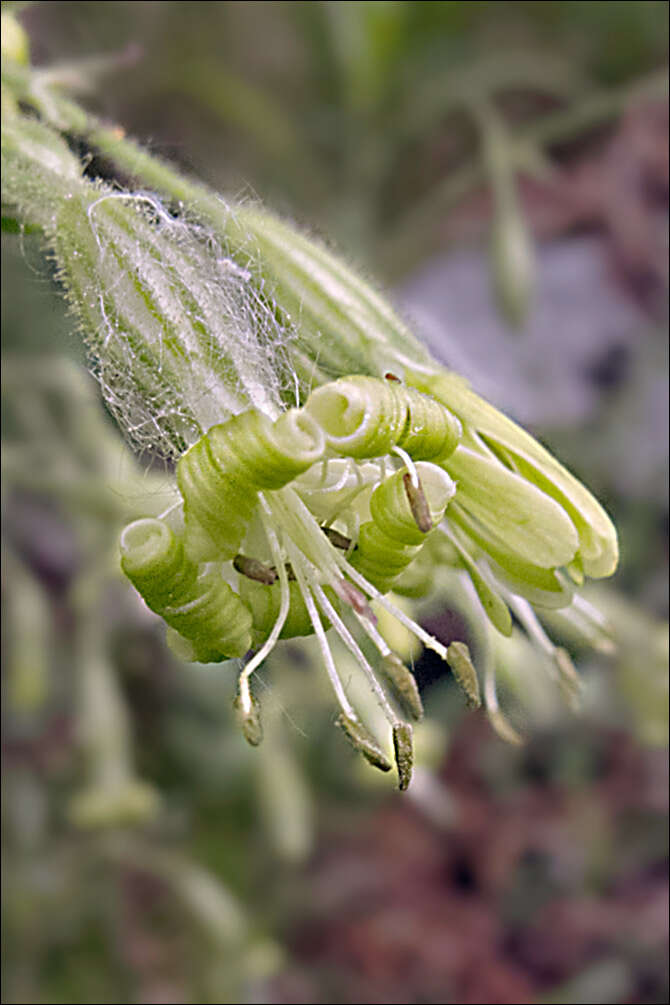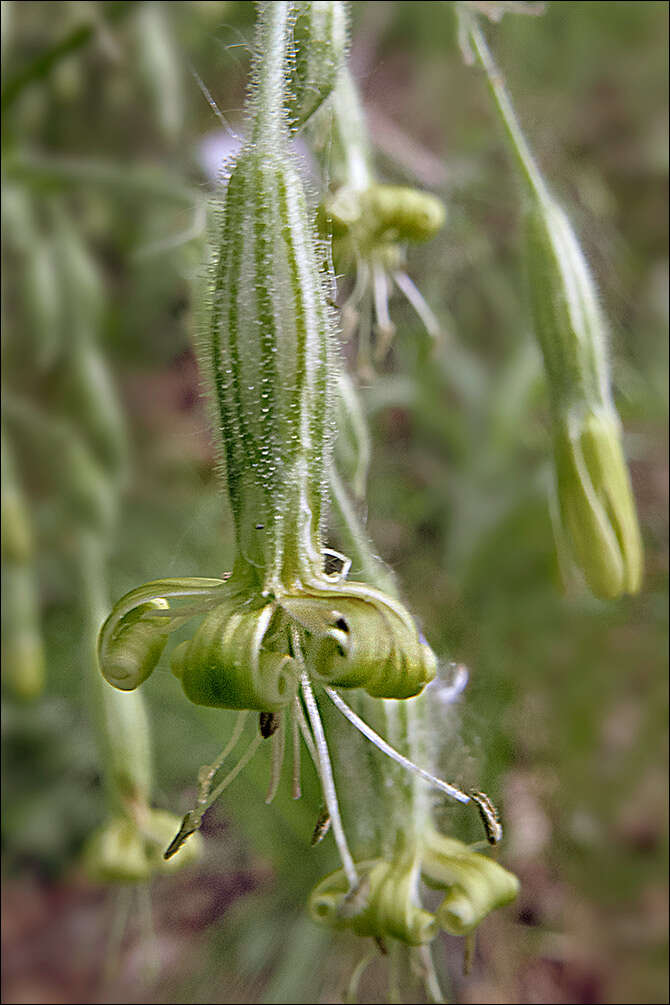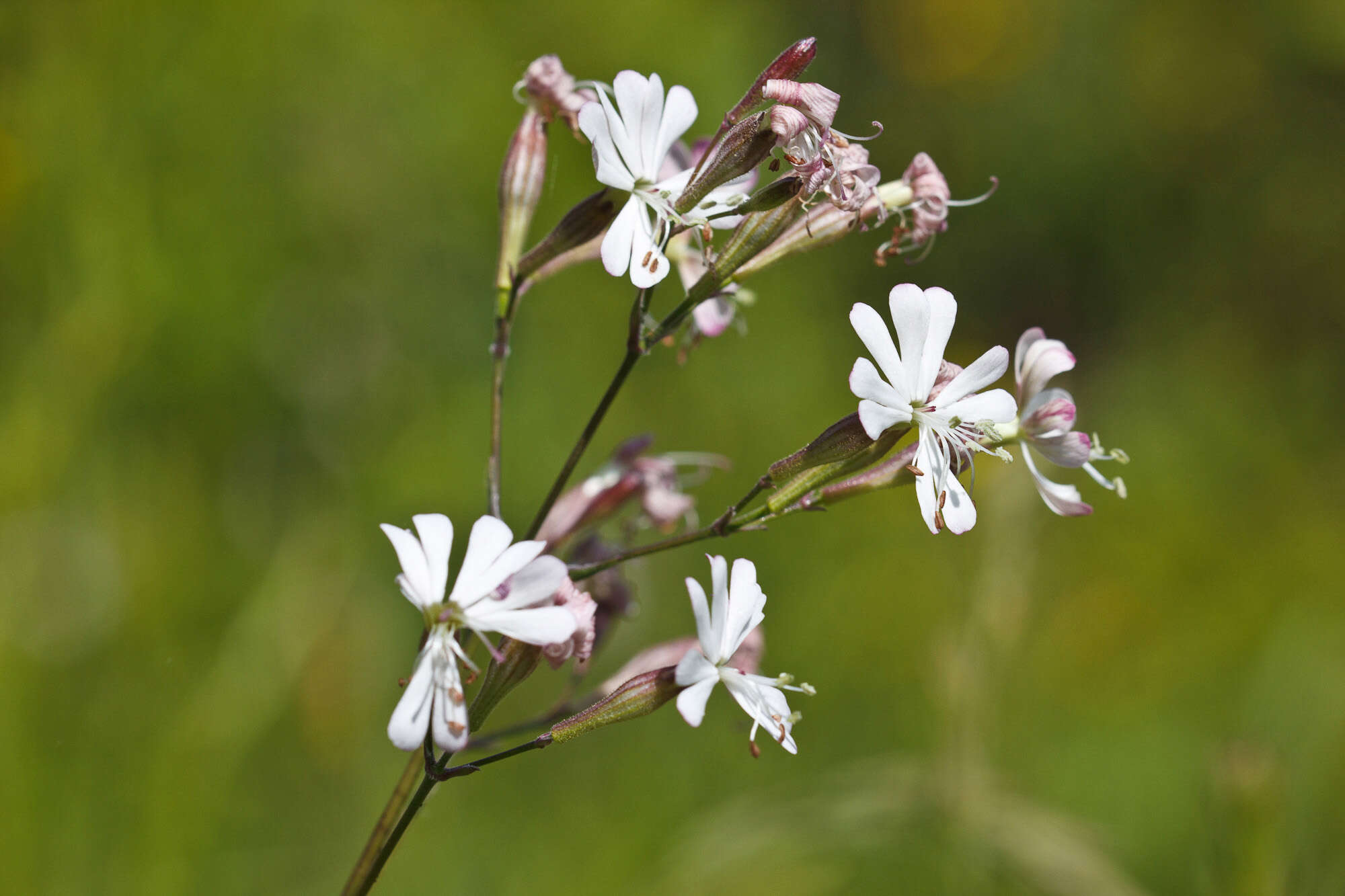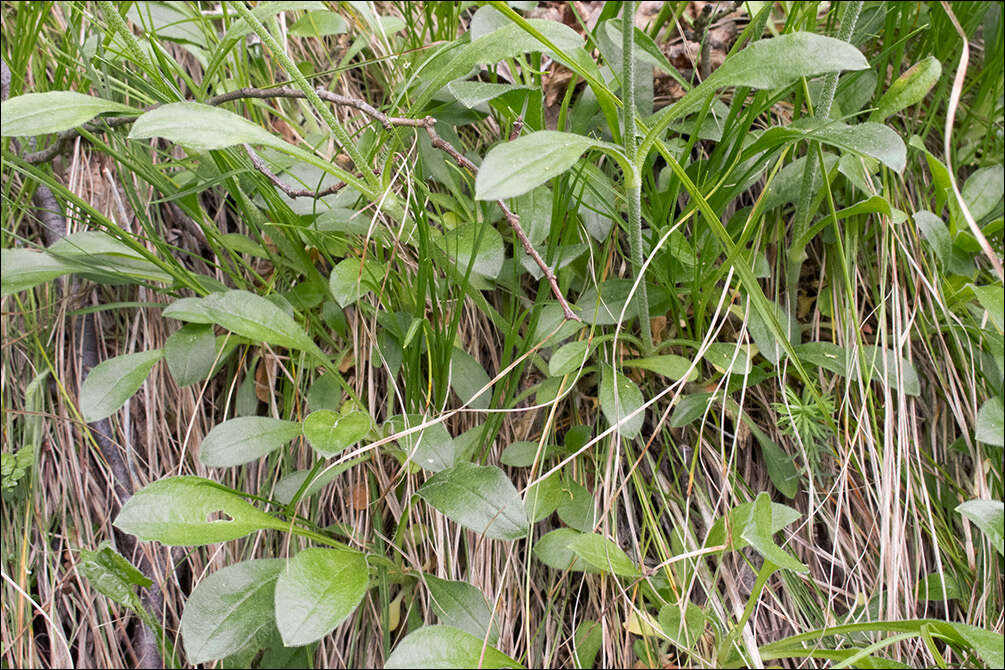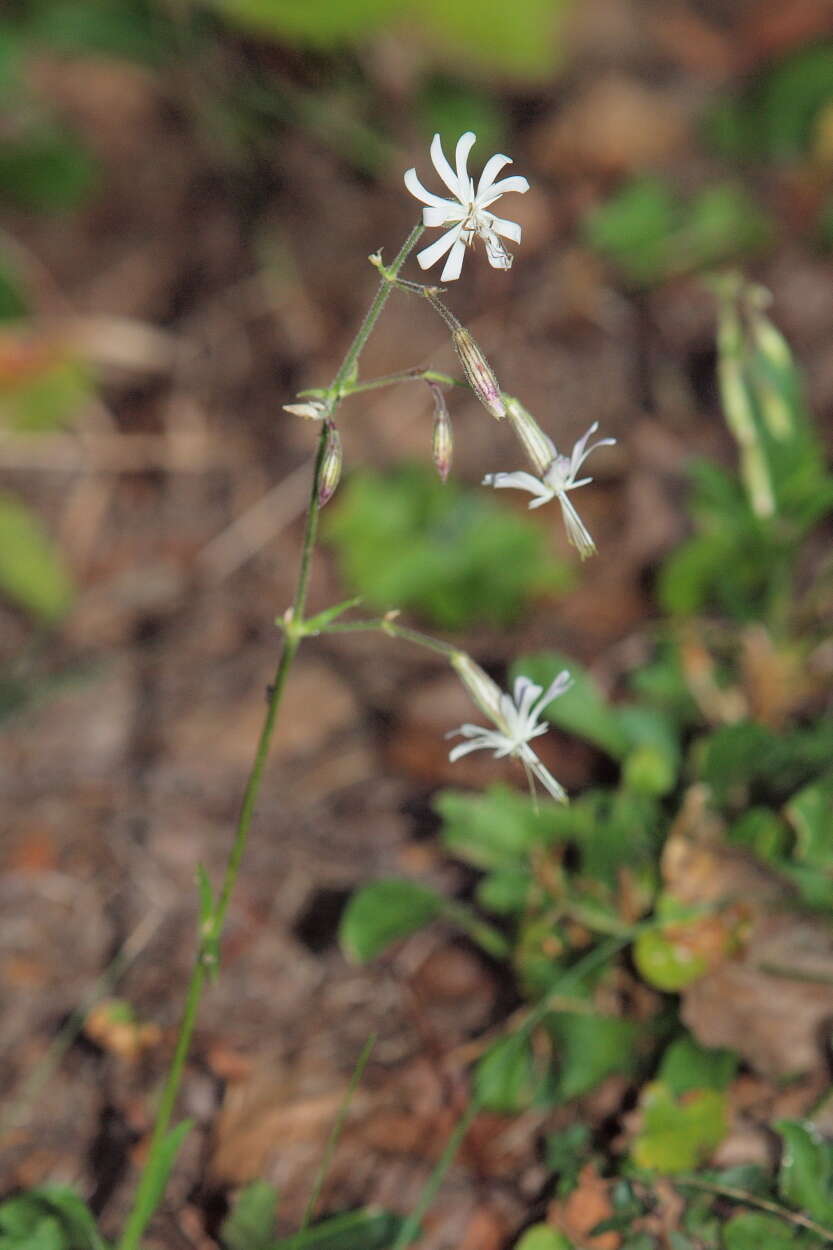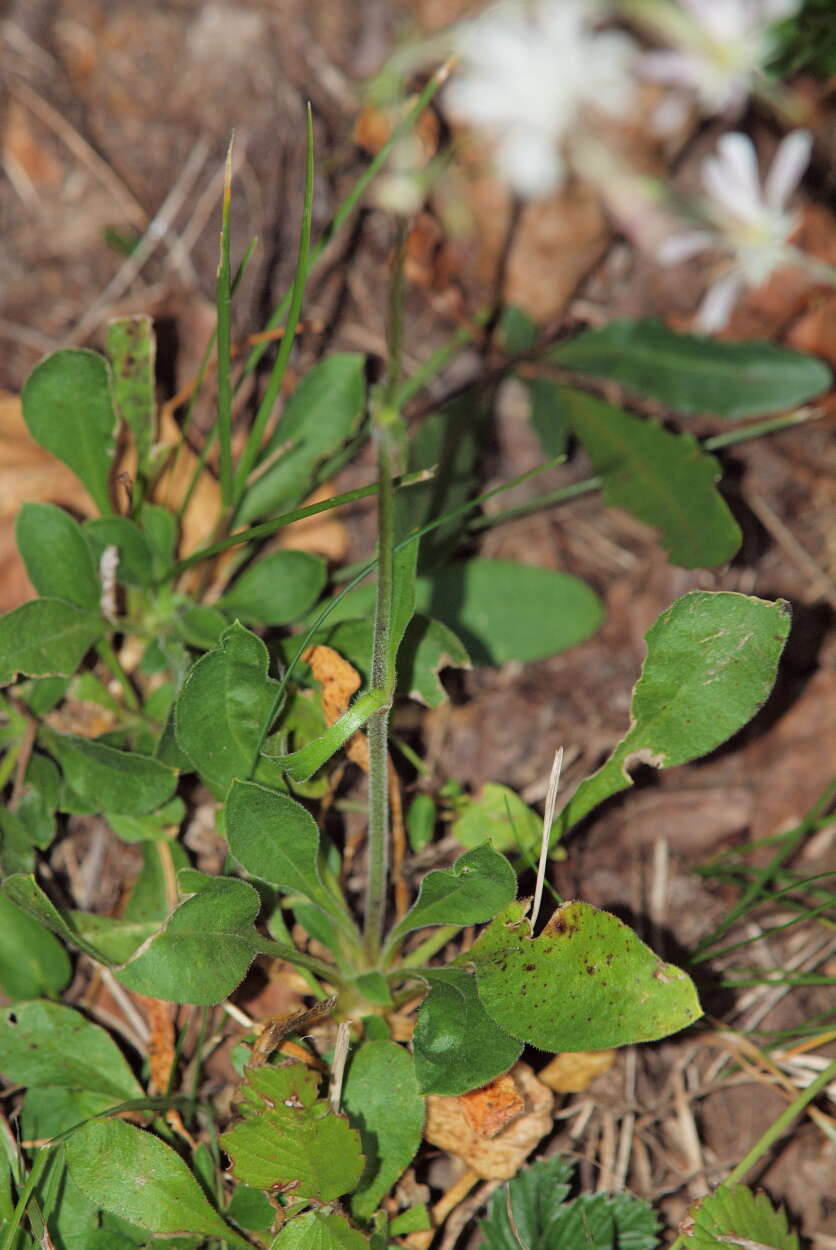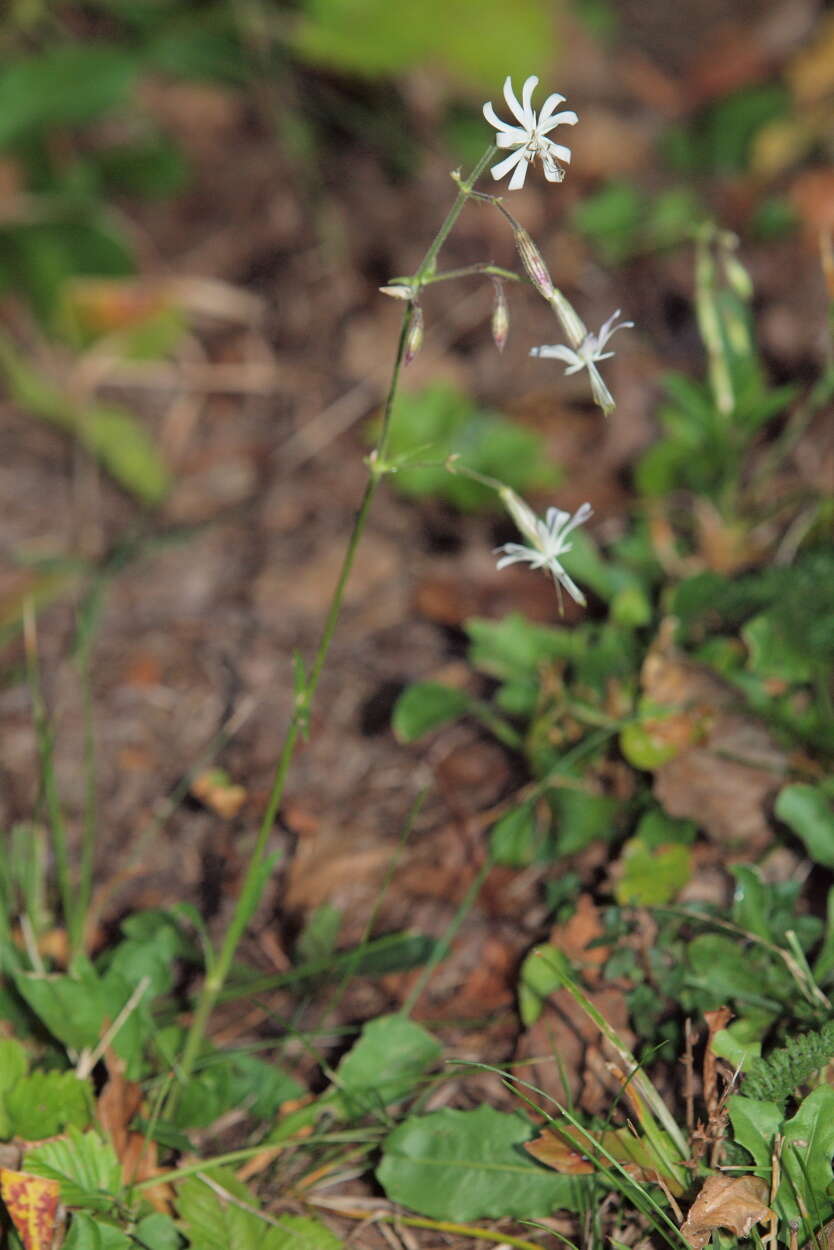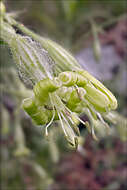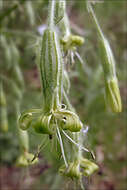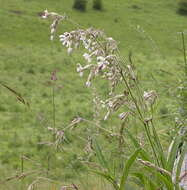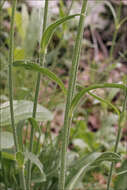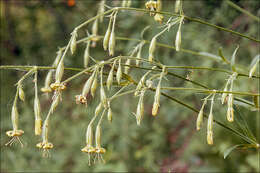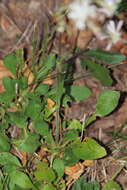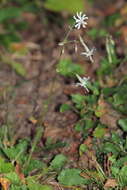Silene nutans (s.l.) L., syn.: Silene brachypoda Rouy Family: CaryophyllaceaeEN: Nottingham Catchfly, DE: Nickendes Leimkraut, Nikend-LeimkrautSlo.: kimasta lepnicaDat.: May 27. 2010Lat.: 46.31206 Long.: 13.46928Code: Bot_0424/2010_IMG0331Habitat: Forest trail side, mixed forest, Ostrya carpinifolia dominant tree; steep mountain slope, south aspect; calcareous ground, among other tall herbs; in shade, elevation 480 m (1.575 feet); average precipitations ~ 3.000 mm/year, average temperature 8-10 deg C, alpine phytogeographical region. Substratum: soil.Place: Left bank of river Uja, next to the trail along north slopes of Uja gorge, about 1 km west of village aga, East Julian Alps, Posoje, Slovenia EC.Comment: Silene nutans in broader sense is an extremely variable plant and insufficiently studied in Slovenia (Ref.: 1). It is an Euro-Siberian temperate floral element (Ref.4). The all-greenish plant as well its small, dropping flowers are inconspicuous particularly during the day. This is because its perianth-lobes are rolled inwards during the day making flowers really small. Only in the evening they unroll and the flowers become somewhat showier and also fragrant, which attracts their pollinators - moths.Several subspecies of Silene nutans have been described with little consensus among botanists. Slovenian key as well as Ref. 2 (Austrian key) recognize two subspecies: Silene nutans L. ssp. nutans and Silene nutans ssp. livida (Wild.) Jeanmonod & Bocquet = Silene nutans ssp. insubrica (Gaudin) Soldano = Silene insubrica. The main distinguishing characters for Silene nutans L. ssp. nutans are: one-sided inflorescence and whitish outer side of the petals. For Silene nutans ssp. livida these are: all-sided inflorescence and olive green to dirty reddish-green outer side of the petals.However, in practice the plants frequently don't want to obey books and keys. Most often I find something in between these two subspecies. An illustrative example are the pictures shown. The plants shown have clearly one-sided inflorescences and muddy greenish (not whitish!) petals on the outer side. So, to which subspecies they belong?Ref.:(1) A. Martini et all., Mala Flora Slovenije (Flora of Slovenia - Key) (in Slovenian), Tehnina Zaloba Slovenije (2007), p 180. (2) M.A. Fischer, W. Adler, K. Oswald, Exkursionsflora fr sterreich, Liechtenstein und Sdtirol, LO Landesmuseen, Linz, Austria (2005), p 338.(3)
www.brc.ac.uk/plantatlas/plant/silene-nutans (accessed April 1. 2019)(4) D. Aeschimann, K. Lauber, D.M. Moser, J.P. Theurillat, Flora Alpina, Vol. 1., Haupt (2004), p 328.


